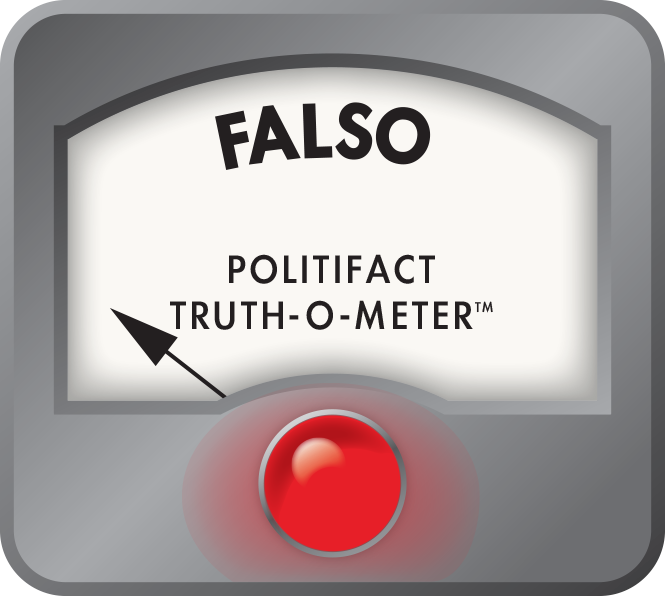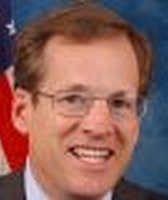Stand up for the facts!
Our only agenda is to publish the truth so you can be an informed participant in democracy.
We need your help.
I would like to contribute
Environmental group makes powerful claim about wind
While some complained about the fine print in the fiscal cliff deal, a local environmental activist was pleased with one portion of the bill and said something about it that seemed worthwhile to fact-check.
Environment Georgia policy advocate Jennette Gayer sent out a news release thanking federal lawmakers for continuing key tax credits for wind power.
"Wind powers nearly 13 million homes across the country and states like Texas, the number one wind energy producer in the country, generate a little over 30 million (megawatt hours per year)," Gayer wrote.
PolitiFact Georgia wondered about Gayer’s claim that wind powers nearly 13 million homes in the United States. Is that true?
Gayer pointed us to a couple of websites she used to back up her claim. PolitiFact Georgia was on its way down the windy road of wind energy.
The development of wind energy, harvested by wind turbines, began in the 1970s. It’s grown in the decades since, but it is still a very small amount (3 percent) of the energy that’s produced in the United States, federal officials and researchers say. President Barack Obama talked energetically about wind power on the campaign trail last year, saying it’s creating jobs and it is an important alternative energy source. Republican presidential nominee Mitt Romney had no plans to continue the tax credits.
In 1992, the federal government began offering tax credits to individuals and companies for wind energy production as part of the Energy Policy Act. For every kilowatt hour of power from wind, the government gives the producer a tax credit worth 2.2 cents. At the time, the U.S. had 1.5 gigawatts of installed wind capacity. A gigawatt is the equivalent of 1 billion watts of electricity. A standard light bulb uses 100 watts.
Most of the nation’s wind energy is produced in Texas, the Plains states and the West Coast, analysts say. Very little comes from the South.
"It’s less windy in the Southeast, so there’s not a lot of technology to generate that energy," said Eric Lantz, a research analyst with the federal government’s National Renewable Energy Laboratory.
Some organizations, such as the Institute for Energy Research, call the tax credits a "boondoggle." The institute, citing a study by the American Tradition Institute, says the costs of wind power is more expensive than other forms of energy generation, such as coal, natural gas and nuclear energy.
By 1999, federal officials say they saw an increase in wind capacity. The American Wind Energy Association, a prominent group that supports the expanded use of wind energy, reported this past August that the U.S. had reached the 50-gigawatt milestone.
The association’s estimate is, Lantz said, about a year ahead of the U.S. Energy Information Administration. Lantz said he reviewed the EIA’s most recent numbers and believes the association’s 50-gigawatt claim is on target.
So how many homes can 50 gigawatts power? Lantz looked at U.S. census data and other information on the EIA website. He concluded about 12 million homes.
"I think their number is reasonable," Lantz said of Gayer’s estimate.
EIA spokesman Jonathan Cogan agreed. The federal agency estimated the nation was on pace to generate anywhere from 125 million to 140 million kilowatts of wind energy in 2012. The average American home uses about 11,000 kilowatts of energy a year, Cogan said.
"It seems to check out," Cogan told us.
We wondered, though, whether that meant 12 million or so homes in the U.S. were actually being powered through wind energy. Lantz said there is no data detailing the number of homes that actually use wind energy. Some of that energy could be powering commercial or other nonresidential facilities.
It’s not possible to say for sure how many homes actually use wind-generated electricity. But it is clear that there is enough produced to power millions of homes.
To sum up, Environment Georgia analyst Jennette Gayer said wind powers about 13 million homes across America.
From the people we interviewed and research we’ve seen, this claim seems to have some juice.
We rate it Mostly True.
Our Sources
Environment Georgia news release, Jan. 2, 2013.
American Tradition Institute, "The Hidden Costs of Wind Electricity," December 2012.
American Wind Energy Association news release, Aug. 7, 2012.
U.S. Energy Information Administration Table 7.2a on forms of electricity generation, accessed Jan. 9, 2013.
JournalistsResource.org, Wind energy in the United States and globally: Research roundup, Jan. 7, 2013.
PolitiFact, "Obama says Romney would end wind power tax credits," Aug. 9, 2012.
Telephone interview with Jennette Gayer, Environment Georgia, Jan. 2, 2013
Telephone interview with Eric Lantz, research analyst, National Renewable Energy Laboratory, Jan. 8, 2013
Telephone interview with Jonathan Cogan, spokesman, U.S. Energy Information Administration, Jan. 9, 2013
U.S. Department of Energy chart on wind power, Oct. 25, 2012.
Browse the Truth-O-Meter
More by Eric Stirgus
Environmental group makes powerful claim about wind
Support independent fact-checking.
Become a member!
In a world of wild talk and fake news, help us stand up for the facts.

















































